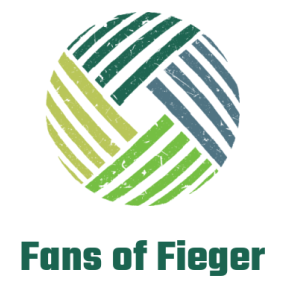In today’s digital age, crafting an engaging user experience is paramount for successful web design proposals. User experience (UX) plays a crucial role in determining the success or failure of a website. It encompasses various elements, including the visual design, ease of navigation, responsiveness, and overall user satisfaction. In this article, we will delve into the intricacies of crafting an engaging user experience for web design proposals and provide valuable insights on how to create captivating websites that leave a lasting impression on visitors.
Understanding User Experience for Web Design Proposals
Crafting an engaging user experience for web design proposals begins with a deep understanding of the target audience and their needs. It’s crucial to conduct thorough research and gather insights into the demographics, preferences, and behaviors of the users who will interact with the website. This knowledge forms the foundation upon which the web design proposal is built, ensuring that every aspect of the website is tailored to meet the expectations of the target audience.
The Importance of Visual Design
Visual design plays a crucial role in crafting an engaging user experience for web design proposals. It encompasses the aesthetic appeal, branding, and overall visual representation of a website. Let’s explore the key aspects that highlight the importance of visual design:
1. Capturing Attention
The visual design of a website is the first thing that grabs the attention of visitors. It creates an initial impression and determines whether users will stay or leave. A visually appealing design with attractive colors, imagery, and typography instantly captures attention and encourages users to explore further.
2. Establishing Brand Identity
Visual design helps in establishing a strong brand identity. Through the use of consistent color schemes, logos, and visual elements, it creates a cohesive and memorable brand image. Consistency in visual design across various touchpoints fosters brand recognition and builds trust among users.
3. Enhancing User Experience
Visual design elements such as layout, navigation menus, and icons contribute to the overall user experience. A well-designed and intuitive interface improves usability, making it easier for users to navigate and find the information they need. Thoughtful visual cues and indicators guide users through the website, enhancing their overall experience.
Now, let’s explore these aspects further in the following table:
| Aspect | Description |
| Capturing Attention | Visually appealing design with attractive colors, imagery, and typography to grab users’ attention and encourage further exploration. |
| Establishing Brand Identity | Consistent use of colors, logos, and visual elements to create a cohesive and memorable brand image. |
| Enhancing User Experience | Well-designed layout, intuitive navigation menus, and visual cues to improve usability and guide users through the website. |
In summary, visual design is essential for capturing attention, establishing a brand identity, and enhancing the overall user experience. By investing in a strong visual design strategy, web design proposals can create visually appealing and memorable websites that leave a lasting impression on visitors.
Navigating with Ease
User-friendly navigation is another crucial aspect of crafting an engaging user experience for web design proposals. Visitors should be able to effortlessly find the information they are looking for and navigate through the website without any confusion or frustration. Implementing intuitive navigation menus, clear and concise labels, and logical information architecture are essential for ensuring a smooth browsing experience. Additionally, providing search functionality and strategically placing call-to-action buttons can further enhance the overall user experience.
Responsiveness and Mobile Optimization
In today’s mobile-driven world, it is imperative to prioritize responsiveness and mobile optimization when crafting an engaging user experience for web design proposals. With an increasing number of users accessing websites through mobile devices, it is essential to ensure that the website adapts seamlessly to different screen sizes and resolutions. Responsive design techniques, such as fluid layouts and scalable images, enable the website to provide a consistent and user-friendly experience across all devices, be it a desktop computer, tablet, or smartphone.
Incorporating Rich Media
Incorporating rich media elements into web design proposals can significantly enhance the user experience. Rich media refers to interactive and engaging content such as images, videos, animations, and interactive elements that go beyond plain text. Let’s explore the key benefits of incorporating rich media:
1. Visual Engagement
Rich media elements, such as high-quality images and videos, capture users’ attention and create a visually engaging experience. They add depth and interest to the content, making it more appealing and memorable. Visual engagement can help communicate complex ideas effectively and leave a lasting impression on visitors.
2. Interactive Experience
Rich media allows for interactivity, enabling users to actively engage with the website. Interactive elements such as sliders, image galleries, maps, and quizzes encourage user participation and provide a more immersive experience. Users can interact with the content, explore different features, and personalize their journey through the website.
3. Storytelling and Branding
Rich media provides an opportunity to tell stories and reinforce branding. By incorporating visual narratives and multimedia elements, web design proposals can create a cohesive brand experience. Visual storytelling through rich media helps to convey messages, evoke emotions, and connect with the audience on a deeper level.
Now, let’s explore these benefits further in the following table:
| Benefit | Description |
| Visual Engagement | High-quality images and videos capture users’ attention, create a visually engaging experience, and leave a lasting impression. |
| Interactive Experience | Interactive elements such as sliders, image galleries, and quizzes encourage user participation and provide a more immersive experience. |
| Storytelling and Branding | Rich media allows for visual storytelling, reinforcing branding, and connecting with the audience on a deeper level. |
Incorporating rich media elements can enhance the user experience by providing visual engagement, interactive experiences, and effective storytelling. By leveraging these benefits, web design proposals can create captivating and memorable websites that leave a lasting impact on visitors.
Crafting Engaging Content
Content is a powerful tool for crafting an engaging user experience for web design proposals. Engaging, informative, and relevant content can keep visitors hooked and encourage them to explore further. It is essential to understand the target audience’s preferences and create content that resonates with their interests and needs. Using a conversational tone, addressing pain points, and incorporating storytelling techniques can captivate users and leave a lasting impression. Additionally, employing appropriate headings, subheadings, and formatting techniques can enhance readability and make the content more scannable.
Optimizing Website Performance
A key aspect of an engaging userexperience is a fast and optimized website performance. Slow loading times can significantly impact user satisfaction and lead to higher bounce rates. To craft an engaging user experience for web design proposals, it is crucial to optimize website performance by:
- Minimizing file sizes: Compressing images, CSS, and JavaScript files can reduce their size without compromising quality, resulting in faster loading times.
- Caching: Implementing caching techniques allows browsers to store certain elements of the website, reducing the need for repetitive requests and speeding up page load times.
- Minifying code: Removing unnecessary characters and spaces from code files can reduce their size and improve website performance.
- Optimizing server response time: Ensuring that the server responds quickly to requests can minimize waiting times for users.
- Content Delivery Network (CDN): Utilizing a CDN can distribute website content across multiple servers worldwide, reducing latency and improving loading times for users in different locations.
By implementing these performance optimization techniques, web designers can create a seamless and enjoyable user experience, ensuring that visitors stay engaged and explore the website further.
Creating Interactive Elements
Incorporating interactive elements into web design proposals can greatly enhance user engagement and create a memorable experience. Interactive elements can include features such as sliders, image galleries, maps, quizzes, and surveys. These elements encourage user participation, provide a sense of interactivity, and allow visitors to actively engage with the website. By strategically placing interactive elements throughout the website, designers can create a more immersive and captivating user experience.
Ensuring Accessibility and Inclusivity
Crafting an engaging user experience for web design proposals also requires a focus on accessibility and inclusivity. It is essential to ensure that the website is accessible to users with disabilities, including those with visual, hearing, or mobility impairments. Web designers should adhere to accessibility guidelines and standards, such as the Web Content Accessibility Guidelines (WCAG), to make the website usable by a wide range of individuals. This includes providing alternative text for images, using descriptive link text, and ensuring proper color contrast for readability.
FAQ’s
Q: How can I gather insights about the target audience for a web design proposal?
A: Conducting user research, surveys, interviews, and analyzing website analytics can provide valuable insights into the demographics, preferences, and behaviors of the target audience.
Q: What are some best practices for responsive web design?
A: Some best practices for responsive web design include using a mobile-first approach, implementing fluid grids and flexible images, and testing the website on various devices and screen sizes.
Q: How can I optimize website performance for faster loading times?
A: You can optimize website performance by minimizing file sizes, leveraging browser caching, minifying code, optimizing server response time, and utilizing a content delivery network (CDN).
Q: Why is interactive content important for user engagement?
A: Interactive content encourages user participation, creates a sense of interactivity, and allows visitors to actively engage with the website, resulting in a more memorable and engaging user experience.
Q: What is web accessibility, and why is it important?
A: Web accessibility refers to the practice of designing and developing websites that can be used by individuals with disabilities. It is important to ensure that websites are accessible to a wide range of users, promoting inclusivity and providing equal access to information and services.
Q: How can I ensure my website is accessible to users with disabilities?
A: Adhering to accessibility guidelines, such as the Web Content Accessibility Guidelines (WCAG), and implementing features like alternative text for images, descriptive link text, and proper color contrast can help ensure website accessibility.
Crafting an engaging user experience for web design proposals requires a combination of creativity, strategic thinking, and attention todetail. By understanding the target audience, prioritizing visual design, optimizing navigation and responsiveness, incorporating rich media, creating engaging content, optimizing performance, and ensuring accessibility, web designers can create captivating websites that leave a lasting impression on visitors. The user experience should be tailored to meet the needs and preferences of the target audience, providing a seamless and enjoyable browsing experience. By implementing these strategies and best practices, web design proposals can successfully engage users, drive conversions, and establish a strong online presence.

